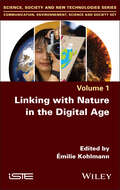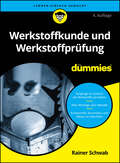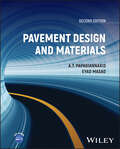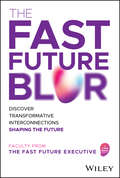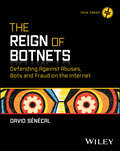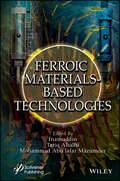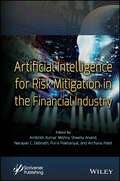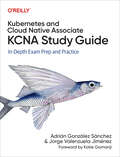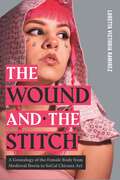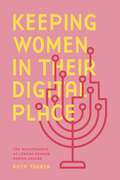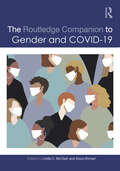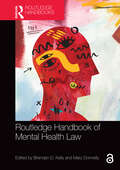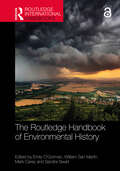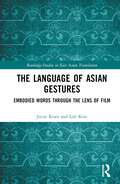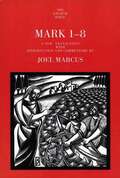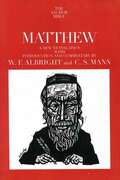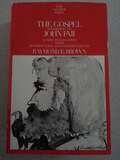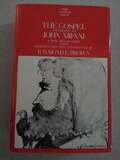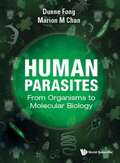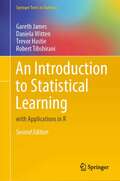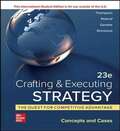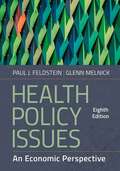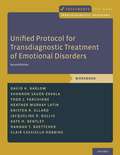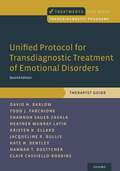- Table View
- List View
Linking with Nature in the Digital Age
by Émilie KohlmannThe use of digital technology in our societies is growing to meet the ever-increasing challenges of data collection, raising awareness, education and understanding nature. Artificial intelligence, for example, appears to be the answer to collecting massive amounts of data on biodiversity at a global scale and facilitating citizen participation in such data collection. Linking with Nature in the Digital Age explores the reconfiguration of our relationship with nature within this digital framework. This book examines this mediated linking from three angles. Firstly, it shows how digital technology can foster the development of links to nature. Then, it describes in greater detail the materiality of these links and how they have evolved with the developments in information technology. Finally, it questions the belief in the digital as a facilitator and opens up new perspectives on our relationship with nature and the living world
Werkstoffkunde und Werkstoffprüfung für Dummies (Für Dummies)
by Rainer SchwabDrum prüfe, wer den Werkstoff findet Werkstoffkunde und Werkstoffprüfung sind für viele Studierende eher Pflicht als Leidenschaft. Rainer Schwab zeigt Ihnen, dass es auch anders geht: Mit Humor und Präzision, mit einfachen Erklärungen und passenden Beispielen erklärt er Ihnen in dieser aktualisierten Auflage die Werkstoffkunde und Werkstoffprüfung so spannend es nur geht. Von den Grundlagen zieht sich der Bogen über die Prüfmethoden hin zu den wichtigen konkreten Werkstoffen und Wärmebehandlungen. So ist dieses Buch das Rundumwohlfühlpaket für jeden, der sich mit dem Thema beschäftigt. Sie erfahren Was die wichtigen Eigenschaften der Werkstoffe sind Wie Sie Härteprüfungen, Zugversuche und Co. richtig durchführen Warum Eisen und Stahl so vielfältig sind Welche wichtigen Werkstoffe es gibt, die nicht aus Eisen sind
Pavement Design and Materials
by A. T. Papagiannakis E. A. MasadPractical guide for all aspects of pavement engineering, updated with the latest techniques, standards, and software The newly revised and updated Second Edition of Pavement Design and Materials offers a comprehensive treatment of pavement materials, structural analysis, design, evaluation, and economic analysis of asphalt and portland concrete pavements. Written by two highly qualified engineering professors with a wealth of experience in the field, Pavement Design and Materials provides readers with: State-of-the-art techniques for material characterization, including a linear viscoelasticity primer Methods and software for the analysis of flexible and ridgid pavements including the AASHTOWare Pavement ME Design State-of-the-art pavement evaluation techniques including moduli backcalculation methods Pavement economic analysis techniques including the most up-to-date user cost relationships. The book companion website provides: Solved examples in each chapter and the electronic files associated with them An instructor solutions manual for the problems provided at the end of each chapter PowerPoint presentations by chapter to facilitate lecture delivery Pavement Design and Materials is an essential up-to-date textbook on the subject for upper-level undergraduate and graduate level courses on pavement materials and pavement design. It is also a valuable reference for practicing professional engineers involved in the various aspects of roadway pavement material selection and structural design.
The Fast Future Blur: Discover Transformative Interconnections Shaping the Future
by The Fast Future ExecutiveThe future blurs strategy, business models, technology, work, and leadership — are you ready? Fast Future Blur provides invaluable insights and strategic frameworks to navigate the complexity of our current period of rapid and radical transformation (‘Fast Future’ phase). Focused on the interconnected nature of the evolution underway, the book serves as an eye-opener for business leaders, providing guidance in understanding this dynamic and complex landscape. Fast Future Blur delves into 12 key areas of change, including platform businesses, regenerative innovation, artificial intelligence, the future of healthcare, the future of work, the future of mobility, blockchain, metaverse, virtual & augmented reality, leadership, agility, fintech, and the impact from 6 inter-connections. With compelling, powerful, and timely insights from the Fast Future Executive faculty — a global consortium of experts and industry leaders, many of whom are associated with the World Economic Forum, top business and technology schools and leading global companies — Fast Future Blur is an essential resource to prepare for the complexities of the future.
The Reign of Botnets: Defending Against Abuses, Bots and Fraud on the Internet (Tech Today)
by David SenecalA top-to-bottom discussion of website bot attacks and how to defend against them In The Reign of Botnets: Defending Against Abuses, Bots and Fraud on the Internet, fraud and bot detection expert David Senecal delivers a timely and incisive presentation of the contemporary bot threat landscape and the latest defense strategies used by leading companies to protect themselves. The author uses plain language to lift the veil on bots and fraud, making a topic critical to your website's security easy to understand and even easier to implement. You'll learn how attackers think, what motivates them, how their strategies have evolved over time, and how website owners have changed their own behaviors to keep up with their adversaries. You'll also discover how you can best respond to patterns and incidents that pose a threat to your site, your business, and your customers. The book includes: A description of common bot detection techniques exploring the difference between positive and negative security strategies and other key concepts A method for assessing and analyzing bot activity, to evaluate the accuracy of the detection and understand the botnet sophistication A discussion about the challenge of data collection for the purpose of providing security and balancing the ever-present needs for user privacy Ideal for web security practitioners and website administrators, The Reign of Botnets is the perfect resource for anyone interested in learning more about web security. It's a can't-miss book for experienced professionals and total novices alike.
Ferroic Materials-Based Technologies
by Inamuddin Tariq Altalhi Mohammad Abu Jafar MazumderFERROIC MATERIALS-BASED TECHNOLOGIES The book addresses the prospective, relevant, and original research developments in the ferroelectric, magnetic, and multiferroic fields. Ferroic materials have sparked widespread attention because they represent a broad spectrum of elementary physics and are employed in a plethora of fields, including flexible memory, enormous energy harvesting/storage, spintronic functionalities, spin caloritronics, and a large range of other multi-functional devices. With the application of new ferroic materials, strong room-temperature ferroelectricity with high saturation polarization may be established in ferroelectric materials, and magnetism with significant magnetization can be accomplished in magnetic materials. Furthermore, magnetoelectric interaction between ferroelectric and magnetic orderings is high in multiferroic materials, which could enable a wide range of innovative devices. Magnetic, ferroelectric, and multiferroic 2D materials with ultrathin characteristics above ambient temperature are often expected to enable future miniaturization of electronics beyond Moore’s law for energy-efficient nanodevices. This book addresses the prospective, relevant, and original research developments in the ferroelectric, magnetic, and multiferroic fields. Audience The book will interest materials scientists, physicists, and engineers working in ferroic and multiferroic materials.
Artificial Intelligence for Risk Mitigation in the Financial Industry
by Narayan C. Debnath Archana Patel Purvi Pokhariyal Shweta Anand Ambrish Kumar MishraArtificial Intelligence for Risk Mitigation in the Financial Industry This book extensively explores the implementation of AI in the risk mitigation process and provides information for auditing, banking, and financial sectors on how to reduce risk and enhance effective reliability. The applications of the financial industry incorporate vast volumes of structured and unstructured data to gain insight into the financial and non-financial performance of companies. As a result of exponentially increasing data, auditors and management professionals need to enhance processing capabilities while maintaining the effectiveness and reliability of the risk mitigation process. The risk mitigation and audit procedures are processes involving the progression of activities to “transform inputs into output.” As AI systems continue to grow mainstream, it is difficult to imagine an aspect of risk mitigation in the financial industry that will not require AI-related assurance or AI-assisted advisory services. AI can be used as a strong tool in many ways, like the prevention of fraud, money laundering, and cybercrime, detection of risks and probability of NPAs at early stages, sound lending, etc. Audience This is an introductory book that provides insights into the advantages of risk mitigation by the adoption of AI in the financial industry. The subject is not only restricted to individuals like researchers, auditors, and management professionals, but also includes decision-making authorities like the government. This book is a valuable guide to the utilization of AI for risk mitigation and will serve as an important standalone reference for years to come.
Kubernetes and Cloud Native Associate (KCNA) Study Guide
by Jorge Valenzuela Jiménez Adrián González SánchezLearn how to prepare for—and pass—the Kubernetes and Cloud Native Associate (KCNA) certification exam. This practical guide serves as both a study guide and point of entry for practitioners looking to explore and adopt cloud native technologies. Adrián González Sánchez and Jorge Valenzuela Jiménez teach you not only the core technology fundamentals, but also the community and industry that KCNA serves.With the meteoric rise in cloud adoption, cloud native technologies such as Kubernetes have become the de facto industry standard. Other Kubernetes certifications—including KCSA, CKAD, CKA, and CKS—are all geared toward higher-level technical proficiency. The KCNA is the entry door to your cloud native journey, and the certification exam covers the cloud native environment generally as well as fundamental Kubernetes skills and knowledge.This guide helps you learn:How to best and most efficiently prepare for the KCNA examThe latest cloud native developments and their importanceThe fundamentals of Kubernetes, cloud native development, and related CNCF projectsThe core elements of Kubernetes applicationsThe crucial elements of modern cloud native developmentHow to differentiate and choose cloud native technologiesThe market value of passing the KCNA examInsights and testimonials from key cloud native industry experts
The Wound and the Stitch: A Genealogy of the Female Body from Medieval Iberia to SoCal Chicanx Art (RSA Series in Transdisciplinary Rhetoric)
by Loretta Victoria RamirezThe Wound and the Stitch traces a history of imagery and language centered on the concept of woundedness and the stitching together of fragmented selves. Focusing particularly on California and its historical violences against Chicanx bodies, Loretta Victoria Ramirez argues that woundedness has become a ubiquitous and significant form of Chicanx self-representation, especially in late twentieth-century print media and art.Ramirez maps a genealogy of the female body from late medieval Iberian devotional sculptures to contemporary strategies of self-representation. By doing so, she shows how wounds—metaphorical, physical, historical, and linguistic—are inherited and manifested as ongoing violations of the body and othered forms of identity. Beyond simply exposing these wounds, however, Ramirez also shows us how they can be healed—or rather stitched. Drawing on Mesoamerican concepts of securing stability during lived turmoil, or nepantla, Ramirez investigates how creators such as Cherríe Moraga, Renee Tajima-Peña, Guillermo Gómez-Peña, and Amalia Mesa-Bains repurpose the concept of woundedness to advocate for redress and offer delicate, ephemeral moments of healing.Positioning woundedness as a potent method to express Chicanx realities and transform the self from one that is wounded to one that is stitched, this book emphasizes the necessity of acknowledgment and ethical restitution for colonial legacies. It will be valued by scholars and students interested in the history of rhetorics, twentieth-century Chicanx art, and Latinx studies.
Keeping Women in Their Digital Place: The Maintenance of Jewish Gender Norms Online
by Ruth TsuriaSince its inception, the internet has been theorized as a democratic force, a public sphere in which hierarchies are flattened. But the internet is not a neutral tool; it has the power to amplify and mirror certain opinions and, as a result, can concretize social norms. So what happens when matters of religious practice and gender identity collide in these—often unregulated—online spaces?In Keeping Women in Their Digital Place, Ruth Tsuria explores how Orthodox Jewish communities in the United States and Israel have used “digital enclaves”—online safe havens created specifically for their denominations—to renegotiate traditional values in the face of taboo discourse encountered online. Combining a personal narrative with years of qualitative analysis, Tsuria examines how discussions in blogs and forums and on social media navigate issues of modesty, dating, marriage, intimacy, motherhood, and feminism. Unpacking the complexity of religious uses of the internet, Tsuria shows how the participatory qualities of digital spaces have been used both to challenge accepted norms and—more pervasively—to reinforce traditional and even extreme attitudes toward gender and sexuality.Original and engaging, this book will appeal to media, feminist, and religious studies scholars and students, particularly those interested in religion in the digital age and Orthodox Jewish communities.
The Routledge Companion to Gender and COVID-19 (Routledge Companions to Gender)
by Linda C. McClain Aziza AhmedThe Routledge Companion to Gender and COVID-19 is the first comprehensive research guide for researchers and students who seek to study and evaluate the complex relationship between gender and COVID-19.This interdisciplinary collection touches on two major themes: first, how gender played a central role in shaping access to testing, treatment, and vaccines. Second, how the pandemic not only deepened existing gender inequalities, but also those along the lines of race, class, sexuality, disability, and immigration status.Bringing together a diverse range of international scholars across a number of disciplinary perspectives, this intersectional and comparative focus on COVID explores topics including the pandemic’s impact on families, employment, childcare and elder care, human rights, as well as gender and political economy and leadership, public health law, disability rights, and abortion access.The Routledge Companion to Gender and COVID-19 is an essential volume for scholars and students of Law, Gender Studies, Sociology, Health, Economics, and Politics.
Routledge Handbook of Mental Health Law (Routledge Handbooks in Law)
by Brendan D. Kelly and Mary DonnellyMental health law is a rapidly evolving area of practice and research, with growing global dimensions. This work reflects the increasing importance of this field, critically discussing key issues of controversy and debate, and providing up-to-date analysis of cutting-edge developments in Africa, Asia, Europe, the Americas, and Australia.This is a timely moment for this book to appear. The United Nations’ Convention on the Rights of Persons with Disabilities (2006) sought to transform the landscape in which mental health law is developed and implemented. This Convention, along with other developments, has, to varying degrees, informed sweeping legislative reforms in many countries around the world. These and other developments are discussed here. Contributors come from a wide range of countries and a variety of academic backgrounds including ethics, law, philosophy, psychiatry, and psychology. Some contributions are also informed by lived experience, whether in person or as family members. The result is a rich, polyphonic, and sometimes discordant account of what mental health law is and what it might be.The Handbook is aimed at mental health scholars and practitioners as well as students of law, human rights, disability studies, and psychiatry, and campaigners and law- and policy-makers.
The Routledge Handbook of Environmental History (Routledge International Handbooks)
by Mark Carey Sandra Swart Emily O’Gorman William San MartínThe Routledge Handbook of Environmental History presents a cutting-edge overview of the dynamic and ever-expanding field of environmental history. It addresses recent transformations in the field and responses to shifting scholarly, political, and environmental landscapes.The handbook fully and critically engages with recent exciting changes, contextualizes them within longer-term shifts in the field, and charts potential new directions for study. It focuses on five key areas: Theories and concepts related to changing considerations of social justice, including postcolonial, antiracist, and feminist approaches, and the field’s growing emphasis on multiple human voices and agencies. The roles of non-humans and the more-than-human in the telling of environmental histories, from animals and plants to insects as vectors of disease and the influences of water and ice, the changing theoretical approaches and the influence of concepts in related areas such as animal and discard studies. How changes in theories and concepts are shaping methods in environmental history and shifting approaches to traditional sources like archives and oral histories as well as experiments by practitioners with new methods and sources. Responses to a range of current complex problems, such as climate change, and how environmental historians can best help mitigate and resolve these problems. Diverse ways in which environmental historians disseminate their research within and beyond academia, including new modes of research dissemination, teaching, and engagements with stakeholders and the policy arena. This is an important resource for environmental historians, researchers and students in the related fields of political ecology, environmental studies, natural resources management and environmental planning.Chapters 9, 10 and 26 of this book are freely available as a downloadable Open Access PDF at http://www.taylorfrancis.com under a Creative Commons Attribution-Non Commercial-No Derivatives (CC-BY-NC-ND) 4.0 license.
The Language of Asian Gestures: Embodied Words Through the Lens of Film (Routledge Studies in East Asian Translation)
by Jieun Kiaer Loli KimThe Language of Asian Gestures explores Asian gestures as a non-verbal language within the context of films and dramas.This book provides a cross-cultural Asian perspective on a range of important common gestures and their meanings, covering a range of Asian regions including Korea, China, Hong Kong, Japan, Taiwan, Vietnam, Singapore, Thailand, Indonesia, the Philippines, India, and Pakistan. While most studies focus on text-based communication, gestures find themselves overshadowed by text and speech. Asian gestures, too, often reside in the shadow of Eurocentric viewpoints. This book will shift this dynamic and amplify the voices that have typically been marginalised within 20th-century Eurocentric discussions.The book will be informative for students and researchers interested in Asian languages, cultures, film studies, and pragmatics. It bridges the gap between words and gestures, unveiling a world of concealed meanings and enriching our understanding of diverse forms of expression.
Mark 1-8 (The Anchor Yale Bible Commentaries)
by Joel MarcusAlthough it appears second in the New Testament, Mark is generally recognized as the first Gospel to be written. Captivating nonstop narrative characterizes this earliest account of the life and teachings of Jesus. In the first installment of his two-volume commentary on Mark, New Testament scholar Joel Marcus recaptures the power of Mark’s enigmatic narrative and capitalizes on its lively pace to lead readers through familiar and not-so-familiar episodes from the ministry of Jesus. As Marcus points out, the Gospel of Mark can be understood only against the backdrop of the apocalyptic atmosphere of the Jewish rebellions of 66-73 c.e., during which the Roman army destroyed the Temple of Jerusalem (70 c.e.). While the Jewish revolutionaries believed that the war was “the beginning of the end” and that a messianic redeemer would soon appear to lead his people to victory over their human enemies (the Romans) and cosmic foes (the demons), for Mark the redeemer had already come in the person of Jesus. Paradoxically, however, Jesus had won the decisive holy-war victory when he was rejected by his own people and executed on a Roman cross. The student of two of this generation’s most respected Bible scholars and Anchor Bible authors, Raymond E. Brown and J. Louis Martyn, Marcus helps readers understand the history, social customs, economic realities, religious movements, and spiritual and personal circumstances that made Jesus who he was. The result is a Bible commentary of the quality and originality readers have come to expect of the renowned Anchor Bible series. Challenging to scholars and enlightening to laypeople, Mark 1-8 is an invaluable tool for anyone reading the Gospel story.
Matthew (The Anchor Yale Bible Commentaries) (The Anchor Bible)
by W. F. Albright C. S. MannThis is volume twenty-six of "The Anchor Bible", a new translation done book-by-book with accompanying introduction, notes, and comments."Matthew" is the most familiar of the gospels, best known for its parables, miracle narratives, and the long Sermon on the Mount. Recognized by the early Church as the most fitting introduction to the "New Testament", its special concern is to announce Jesus as the fulfillment of the "Old Testament". Hence its emphasis on the Law, on ethics based on the traditional theology of the Covenant, and on the centrality of Messianic hope.This commentary sets the understanding of "Matthew" in the context of its author's own religious and secular background. Believing that the text should be approached directly, the writers of the commentary make constant use of the recently discovered historical and linguistic evidence now available to elucidate it. This approach results in placing Jesus firmly within the framework of ascertainable Jewish tradition in first-century Palestine.The writers hold that the claim of Jesus to fulfill the Law and not to abolish it must be taken seriously. They have therefore taken a fresh look at the legal discussions in Matthew. In the light of their examination, there emerges first a revaluation of the meaning attached to such key words as "parables" and "hypocrite" and then a new and vital significance for such words.The result is a new respect for "Matthew", a highly reliable early source for the ministry of Jesus, and an examination of that ministry uncluttered by the presuppositions of various forms of modern "Platonism."
The Gospel According To John: Chapters I-xii (Anchor Bible Commentaries Ser.)
by Raymond E. BrownIn the first volume of Raymond E. Brown’s magisterial three-volume commentary on the Gospel According to John, all of the major Johannine questions—of authorship, composition, dating, the relationship of John to the Synoptics (Mark, Matthew, and Luke)—are discussed. The important theories of modern biblical scholarship concerning John are weighed against the evidence given in the text and against prevailing biblical research. In sum, what is attempted is a synthesis of the major scholarly insights that bear on the Fourth Gospel. The translation—as Father Brown states at the outset—strives not for any formal beauty but rather for an accurate and contemporary version: “the simple, everyday Greek of the Gospel has been rendered into the ordinary American English of today.” The result is a translation that will strike the reader with uncommon immediacy. Father Brown also analyzes, in the appendixes, the meaning, use, and frequency of certain key words and phrases that occur in John, and examines the differences between the Johannine and Synoptic treatments of the miracle stories. The chapters of the Gospel translated here in Volume 29 (1–12) comprise the Prologue, which opens with the famous “In the beginning was the Word,” and the Book of Signs, an account of the miracles of Jesus and of his ministry.
The Gospel According To John: Chapters Xiii-xxi (Anchor Bible Ser. #Vol. 29a)
by Raymond E. BrownThis volume concludes Raymond E. Brown's commentary on the Gospel of John. Continuing his study begun in Anchor Bible Volume 29, the author translates the original Greek text into today's English. which allows all readers to make sense of the Gospel.
Human Parasites: From Organisms To Molecular Biology (G - Reference,information And Interdisciplinary Subjects Ser.)
by Dunne Fong Marion M. ChanWhy does the World Health Organization (WHO) put emphasis on neglected tropical diseases (NTDs)? What are the NTDs? Are NTDs found in the United States? Is there any relationship between coronavirus disease 2019 (COVID-19) and NTDs? These are some of the questions being addressed in the book.The aim of this textbook is to introduce a modern synthesis on human parasites of medical importance. Species of parasitic protozoa and helminths are presented in detail, from history and discovery to aspects of genomes and molecular biology, together with life cycle, therapy, drug resistance, and case studies of parasitic diseases useful to the clinicians.
An Introduction To Statistical Learning: With Applications In R (Springer Texts In Statistics Ser.)
by Trevor Hastie Gareth James Robert Tibshirani Daniela WittenAn Introduction to Statistical Learning provides an accessible overview of the field of statistical learning, an essential toolset for making sense of the vast and complex data sets that have emerged in fields ranging from biology to finance to marketing to astrophysics in the past twenty years. This book presents some of the most important modeling and prediction techniques, along with relevant applications. Topics include linear regression, classification, resampling methods, shrinkage approaches, tree-based methods, support vector machines, clustering, deep learning, survival analysis, multiple testing, and more. Color graphics and real-world examples are used to illustrate the methods presented. Since the goal of this textbook is to facilitate the use of these statistical learning techniques by practitioners in science, industry, and other fields, each chapter contains a tutorial on implementing the analyses and methods presented in R, an extremely popular open source statistical software platform. Two of the authors co-wrote The Elements of Statistical Learning (Hastie, Tibshirani and Friedman, 2nd edition 2009), a popular reference book for statistics and machine learning researchers. An Introduction to Statistical Learning covers many of the same topics, but at a level accessible to a much broader audience. This book is targeted at statisticians and non-statisticians alike who wish to use cutting-edge statistical learning techniques to analyze their data. The text assumes only a previous course in linear regression and no knowledge of matrix algebra. This Second Edition features new chapters on deep learning, survival analysis, and multiple testing, as well as expanded treatments of naïve Bayes, generalized linear models, Bayesian additive regression trees, and matrix completion. R code has been updated throughout to ensure compatibility.
Crafting And Executing Strategy: The Quest For Competitive Advantage: Concepts And Cases
by Arthur A. ThompsonCrafting & Executing Strategy: The Quest for Competitive Advantage: Concepts & Cases 23e has a long-standing reputation of being the most teachable text. It is regarded as the benchmark by which all others are measured. It is engaging, clearly articulated and conceptually balanced mainstream treatment of the latest developments in theory and practice include the clearest presentation of the value-price-cost framework. Our co-author, Margaret Peteraf, a highly regarded researcher, helped integrate both the resource-based view of the firm from the perspective of both single-business and multi-business strategies. Chapter content is tightly linked to the 27 high-interest cases, most of which are written by the text authors, and receive high acclaim for student appeal, teach ability and suitability.
Health Policy Issues: An Economic Perspective, Eighth Edition
by Paul J. Feldstein Glenn MelnickHealth Policy Issues: An Economic Perspective uses concise, topical chapters to provide a comprehensive overview of the forces influencing healthcare financing and delivery. Concerns over health equity and the rise in healthcare costs are just a few of the timely and vital issues that are discussed through the lens of economics. Each chapter includes a clear explanation of the topic, diagrams, and charts to aid comprehension, and a summary and discussion questions at the end. This eighth edition has been revised to reflect the most recent research and data, as well as changes in laws and government policies. A new chapter compares the US health system to those of five European countries. New and updated content includes coverage of: • Current Medicare proposals • COVID’s effect on medical services delivery • Medicaid effectiveness • Strategies for addressing the physician shortage • Affordable Care Act updates Health Policy Issues shows how the economic approach to healthcare policy is important not only for understanding the structural and dynamic forces pressing for change in healthcare but also for explaining why the health system has evolved to its current state.
Fundamentals Of Chemical Engineering Thermodynamics (International Series In The Physical And Chemical Engineering Sciences Ser.)
by Themis MatsoukasThe Clear, Well-Organized Introduction to Thermodynamics Theory and Calculations for All Chemical Engineering Undergraduate Students This text is designed to make thermodynamics far easier for undergraduate chemical engineering students to learn, and to help them perform thermodynamic calculations with confidence. Drawing on his award-winning courses at Penn State, Dr. Themis Matsoukas focuses on “why” as well as “how.” He offers extensive imagery to help students conceptualize the equations, illuminating thermodynamics with more than 100 figures, as well as 190 examples from within and beyond chemical engineering. Part I clearly introduces the laws of thermodynamics with applications to pure fluids. Part II extends thermodynamics to mixtures, emphasizing phase and chemical equilibrium. Throughout, Matsoukas focuses on topics that link tightly to other key areas of undergraduate chemical engineering, including separations, reactions, and capstone design. More than 300 end-of-chapter problems range from basic calculations to realistic environmental applications; these can be solved with any leading mathematical software.
Unified Protocol for Transdiagnostic Treatment of Emotional Disorders: Workbook (Treatments That Work)
by David H. BarlowLeading therapists and researchers have come to understand that many psychological disorders share common features and respond to common therapeutic treatments. This deepened understanding of the nature of psychological disorders, their causes, and their symptoms has led to the development of new, comprehensive treatment programs that are effective for whole classes of disorders. Unified Protocol for Transdiagnostic Treatment of Emotional Disorders is one such program. <P><P>Designed for individuals suffering from emotional disorders, including panic disorder, social anxiety disorder, generalized anxiety disorder, posttraumatic stress disorder, obsessive compulsive disorder, and depression, this program focuses on helping you to better understand your emotions and identify what you're doing in your responses to them that may be making things worse. Throughout the course of treatment you will learn different strategies and techniques for managing your emotional experiences and the symptoms of your disorder. You will learn how to monitor your feelings, thoughts, and behaviors; confront uncomfortable emotions; and learn more effective ways of coping with your experiences. By proactively practicing the skills presented in this book-and completing the exercises, homework assignments and self-assessment quizzes provided in each chapter, you will address your problems in a comprehensive and effective way so you can regulate your emotional experiences and return to living a happy and functional life.
Unified Protocol for Transdiagnostic Treatment of Emotional Disorders: Therapist Guide (Treatments That Work)
by David H. Barlow Todd J. Farchione Christopher P. FairholmeContemporary research on major emotional disorders emphasizes their commonalities rather than their differences. This research continues to lend support for a unified transdiagnostic approach to treatment of these disorders that considers their commonalities and is applicable to a range of emotional problems. <P><P>Unified Protocol for Transdiagnostic Treatment of Emotional Disorders provides an alternative to disorder-specific treatments of various emotional disorders, designed to be applicable to the wide range of anxiety and other disorders with strong emotional components. The Therapist Guide and accompanying client Workbook present an eight-module therapy program that puts substantial emphasis on emotion-focused approaches, helping clients confront and experience challenging emotions while teaching them how to regulate those emotions. Expanded considerably in this second edition, the volume provides guidance on using the Unified Protocol (UP) to address problems not only with anxiety, but also with depression, eating disorders, non-suicidal self-injury, substance use, and anger. Treatment procedures have been further elucidated and more guidance is provided to practitioners on how to present key treatment concepts. Chapters brand new to this updated edition introduce functional assessment and describe how to provide the UP in a group format, while patient materials have been revised, streamlined, and made more user-friendly.
